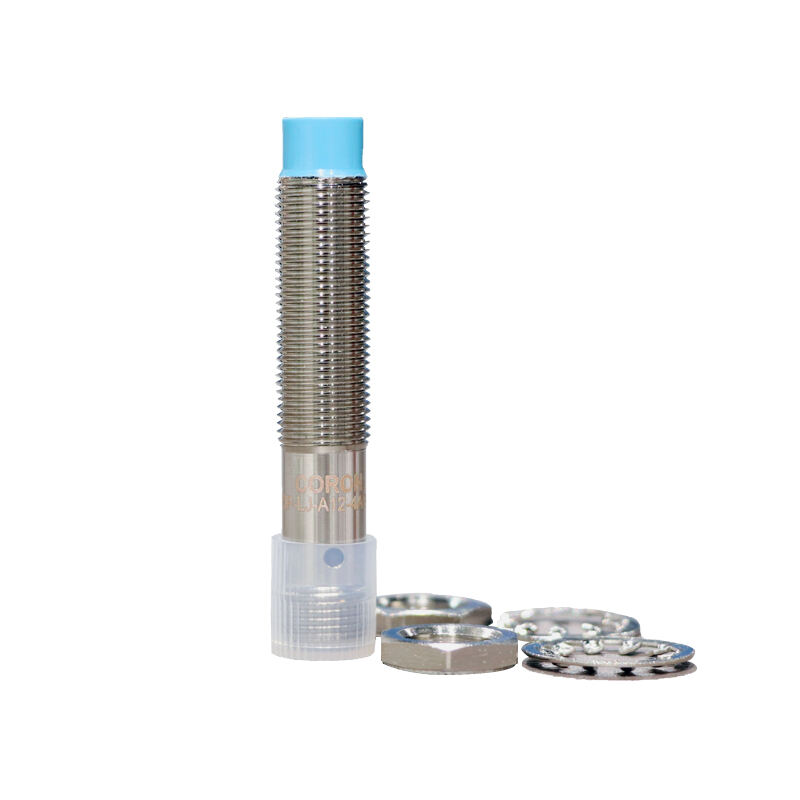Understanding Proximity Sensing Technology in Industrial Applications
Proximity sensors have revolutionized industrial automation by enabling non-contact detection of objects in challenging environments. These sophisticated devices utilize various sensing technologies to detect the presence or absence of objects without physical contact, making them invaluable in harsh industrial settings where traditional sensors might fail. From extreme temperatures to corrosive chemicals, proximity sensors continue to demonstrate their resilience and reliability.
In modern manufacturing and processing facilities, the ability to detect objects accurately while withstanding hostile conditions has become increasingly crucial. Proximity sensors excel in these demanding applications, offering robust performance even when exposed to dust, debris, moisture, and extreme temperatures. Their versatility and durability have made them the preferred choice for industries ranging from mining to chemical processing.

Core Technologies Behind Industrial Proximity Sensors
Inductive Sensing Principles
Inductive proximity sensors operate using electromagnetic fields to detect metallic objects. These sensors generate a high-frequency electromagnetic field that changes when a metallic target enters the sensing zone. This technology proves particularly effective in dirty environments where optical sensors might struggle, as they can detect through layers of non-metallic contamination.
The robustness of inductive sensing makes it ideal for applications involving metal detection in harsh conditions. These sensors maintain their accuracy even when exposed to oil, dust, or metal shavings, making them perfect for machining centers and metal processing facilities.
Capacitive Detection Methods
Capacitive proximity sensors utilize changes in the electrical field to detect both metallic and non-metallic objects. This versatility allows them to detect materials ranging from liquids to plastics, even through some container walls. Their ability to detect multiple material types makes them valuable in food processing and chemical handling applications.
These sensors excel in environments where material level detection or position monitoring is required, regardless of the target material's composition. Their sealed construction provides excellent protection against harsh environmental factors while maintaining sensitive detection capabilities.

Environmental Protection Features
Protective Housing and Sealing
Modern proximity sensors incorporate robust housing designs that protect their internal components from harsh environmental conditions. Industry-standard IP67 or IP68 ratings ensure protection against dust ingress and water immersion, while specialized materials resist chemical corrosion and mechanical stress.
The housing design often includes multiple sealing barriers and specialized cable entries to prevent moisture and contaminant infiltration. This multi-layered protection approach ensures long-term reliability even in the most challenging industrial environments.
Temperature Compensation Mechanisms
To maintain accuracy across wide temperature ranges, proximity sensors employ sophisticated temperature compensation circuits. These systems automatically adjust sensor parameters to account for thermal effects, ensuring consistent detection regardless of ambient temperature fluctuations.
Advanced temperature compensation allows proximity sensors to operate reliably in environments ranging from freezing cold to extreme heat, making them suitable for applications in outdoor installations, furnaces, and refrigeration systems.
Application-Specific Adaptations
Chemical Processing Solutions
In chemical processing environments, proximity sensors face challenges from corrosive substances and potentially explosive atmospheres. Specially designed sensors with chemical-resistant housings and intrinsically safe certifications ensure reliable operation while maintaining safety compliance.
These adapted sensors often feature additional protective coatings and specialized materials that resist chemical attack while maintaining their sensing capabilities. This makes them ideal for monitoring valve positions, fluid levels, and process equipment in chemical plants.
Mining and Heavy Industry Applications
The mining industry presents unique challenges including extreme dust levels, heavy vibration, and potential impact damage. Proximity sensors designed for these environments feature reinforced housings, shock-mounting systems, and enhanced filtering algorithms to maintain reliable detection despite these harsh conditions.
These robust sensors prove essential in applications such as conveyor monitoring, equipment positioning, and material level detection in mining operations, where reliability and durability are paramount.
Advanced Features and Integration
Diagnostic Capabilities
Modern proximity sensors incorporate advanced self-diagnostic features that continuously monitor sensor health and performance. These systems can detect potential issues before they lead to failure, enabling preventive maintenance and reducing costly downtime.
Integration with industrial networks allows these diagnostic data to be transmitted to control systems, enabling real-time monitoring and predictive maintenance strategies. This connectivity enhances overall system reliability and operational efficiency.
Smart Sensing Technologies
The latest generation of proximity sensors includes smart features such as adjustable sensing ranges, programmable outputs, and advanced filtering algorithms. These capabilities allow sensors to adapt to changing environmental conditions and application requirements without physical modifications.
Smart sensing technologies enable more flexible and efficient industrial processes while maintaining reliable operation in harsh environments. The ability to remotely configure and monitor sensors reduces maintenance requirements and improves system adaptability.
Frequently Asked Questions
How long do proximity sensors typically last in harsh environments?
When properly selected and installed, industrial proximity sensors can operate reliably for 5-10 years in harsh environments. Regular maintenance and appropriate protection ratings significantly influence their lifespan. Factors such as extreme temperatures, chemical exposure, and mechanical stress can affect durability, but modern sensors are designed to withstand these challenges with minimal degradation in performance.
What protection rating is recommended for wet environments?
For wet environments, proximity sensors should have a minimum IP67 rating, which ensures protection against dust and temporary immersion in water. For locations with constant water exposure or high-pressure washing, IP68-rated sensors are recommended to provide enhanced protection against prolonged submersion.
Can proximity sensors function accurately in extreme temperatures?
Yes, specially designed proximity sensors can operate in temperature ranges from -40°C to +120°C or even wider ranges with appropriate temperature compensation mechanisms. However, it's crucial to select sensors specifically rated for the expected temperature range and consider any potential temperature fluctuations in the application environment.

